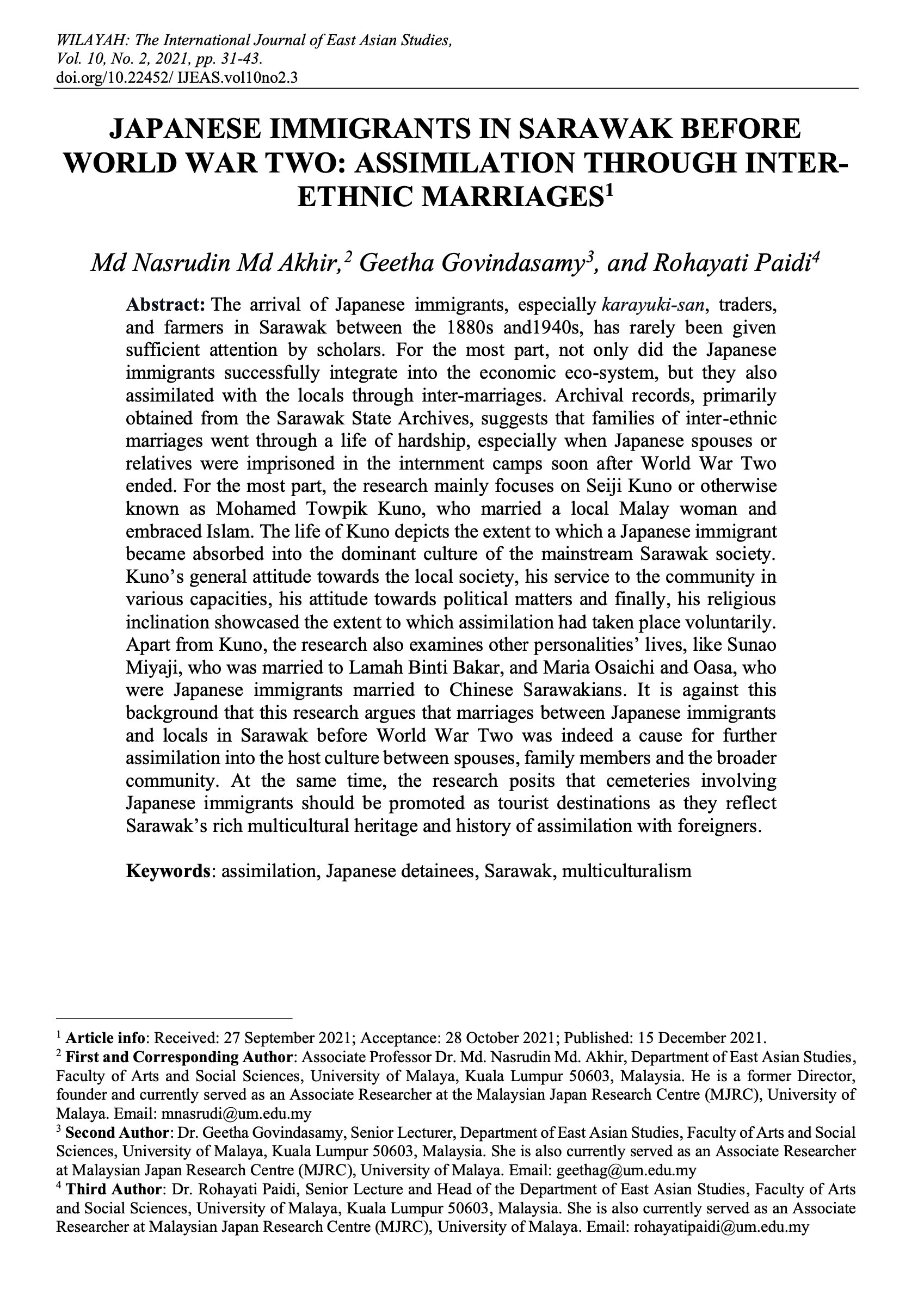Japanese Immigrants In Sarawak Before World War Two: Assimilation Through Inter-Ethnic Marriages
Main Article Content
Abstract
Abstract: The arrival of Japanese immigrants, especially karayuki-san, traders, and farmers in Sarawak between the 1880s and1940s, has rarely been given sufficient attention by scholars. For the most part, not only did the Japanese immigrants successfully integrate into the economic eco-system, but they also assimilated with the locals through inter-marriages. Archival records, primarily obtained from the Sarawak State Archives, suggests that families of inter-ethnic marriages went through a life of hardship, especially when Japanese spouses or relatives were imprisoned in the internment camps soon after World War Two ended. For the most part, the research mainly focuses on Seiji Kuno or otherwise known as Mohamed Towpik Kuno, who married a local Malay woman and embraced Islam. The life of Kuno depicts the extent to which a Japanese immigrant became absorbed into the dominant culture of the mainstream Sarawak society. Kuno’s general attitude towards the local society, his service to the community in various capacities, his attitude towards political matters and finally, his religious inclination showcased the extent to which assimilation had taken place voluntarily. Apart from Kuno, the research also examines other personalities’ lives, like Sunao Miyaji, who was married to Lamah Binti Bakar, and Maria Osaichi and Oasa, who were Japanese immigrants married to Chinese Sarawakians. It is against this background that this research argues that marriages between Japanese immigrants and locals in Sarawak before World War Two was indeed a cause for further assimilation into the host culture between spouses, family members and the broader community. At the same time, the research posits that cemeteries involving Japanese immigrants should be promoted as tourist destinations as they reflect Sarawak’s rich multicultural heritage and history of assimilation with foreigners.
Downloads
Article Details

This work is licensed under a Creative Commons Attribution-NonCommercial 4.0 International License.
Copyright
Submission of a manuscript to the WILAYAH implies that the submitted work has not been published before (except as part of a thesis or report or abstract), that it is not under consideration for publication elsewhere; that all co-authors have approved its publication. The WILAYAH : International Journal of East Asian Studies adopts CC BY license. As such, we would be grateful if an acknowledgement accompanies the republication that the work was originally published in WILAYAH. The editors will ensure digital preservation of access to the journal content by the Journal depository section.
Disclaimer
Although the Department of East Asian Studies is the publisher of the WILAYAH : International Journal of East Asian Studies, the views presented in the WILAYAH are entirely those of the contributors and do not reflect the official stand of the Department of East Asian Studies. The Department does not hold itself responsible for the accuracy of any article published. Publisher and co-publishers assume no responsibility, nor by the editors for any injury and/or damage to persons or property as a result of any actual or alleged libellous statements, infringement of intellectual property or privacy rights, or products liability, whether resulting from negligence or otherwise, or from any use or operation of any ideas, instructions, procedures, products or methods contained in the material therein.

